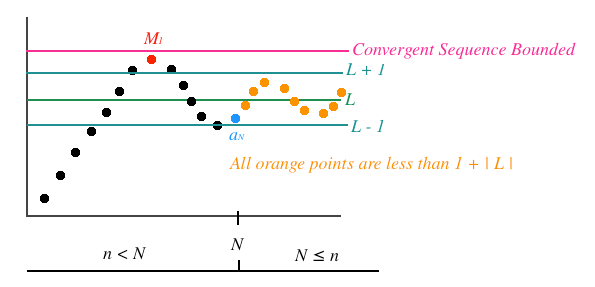A Few Definitions
Completeness
What is completeness? Intuitively, it just means the real numbers have no “gap”. For example, the rational numbers have gaps at every irrational number.
Bounded Above
This means that a given set has an upper bound. This just means the set doesn’t have infinitely large values.
Least Upper Bound
A least upper bound is the smallest upper bound for a given set.
Least Upper Bound Property
There are a few ways of expressing completeness. One is called the least upper bound property.
Theorem: If X is non-empty and bounded above, there exists a sequence in X that converges to the LUB(x).
Convergent Sequences are Bounded
This is true. Why is this non-obvious? If you have a sequence with five numbers, the lower bound is the minimum of those five, and the upper bound is the maximum of those five. However, an infinite sequence may not necessarily have a finite max and minimum.
Bounded Sequences are Convergent
Not true. Consider the sequence [0,1,0,1,0,1,0,1 … ] This does not converge. However, this leads us to one of the most important theorems in real analysis.
Bounded Sequences have a Convergent Subsequence
This is also known as the Bolzano-Weierstrass Theorem.
Extreme Value Theorem
Bolzano-Weierstrass is required to prove this theorem. With this theorem, we are able to optimization, meaning we maximize a function given a constraint.

